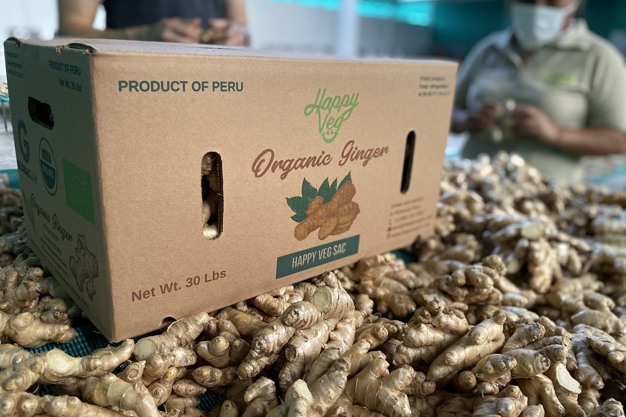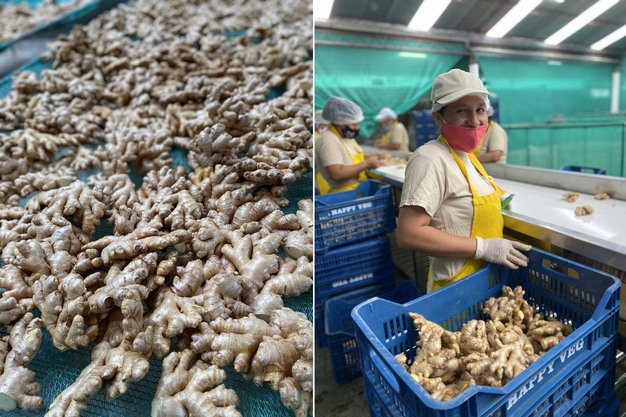Ginger plantings in Peru are down and as a result, the crop is short this season. “There is a giant lack of ginger from Peru,” says Cameron Mistal of Happy Veg. “The price of just raw material in the jungle is now above 10.5 soles per kg., which is the equivalent of $2.75 and we will continue to see it rise until the start of the new season.” Peru’s new season will start around June/July and although production is expected to be up about 10 to 15 percent from this season, high demand will easily absorb the supply. “Come January, February 2025, the market will be short again,” Mistal commented.
While ginger production in Costa Rica and Honduras is also growing, volumes from these countries are relatively small and are unable to fill the void from Peru. What doesn’t help is that about 40 percent of Costa Rica’s ginger crop got lost this season due to a bacterial problem. “Apart from that, it’s not possible to simply replace Peruvian ginger with ginger from Costa Rica or Honduras as the market reception of ginger varieties from these countries is different. The color is not the same as the color of Peruvian ginger and the juice tastes differently as well.”

Non-Chinese versus Chinese ginger
While China has lots of ginger available at relatively low prices, it is less popular due to a difference in quality. “The world can be segmented into non-China ginger and China ginger,” commented Mistal. “Given that the quality is so different, it is not possible to replace non-China ginger with China ginger during this time of shortage. Markets like the US, Canada, the UK, and the EU don’t favor Chinese ginger and are predominantly interested in purchasing non-Chinese ginger from countries like Peru, Brazil, Mexico, Costa Rica, Honduras, and Thailand. From all importing countries, the UK is probably the most receptive to buying ginger from China, but in all other nations, the majority of supermarkets don’t want to sell Chinese ginger. Central & South America have proven to be our best trading partners.”
Happy Veg grows its own ginger in Peru. “We are 100 percent vertically integrated from farming to selling fresh ginger as well as value-added products and retail products. The company sells its ginger products into the US, Canada, the European Union, the UK, and Africa. “In addition, we will be entering Japan and Australia soon,” shared Mistal. “We also have our own storage capabilities in the US and Europe. That way, we always have product available for our customers in these regions of the world.”

Fruit Logistica
Next week, Happy Veg will be exhibiting at Fruit Logistica Berlin. “We’ve attended the show for many years and now have our own booth,” said Mistal. “It’s one of the larger shows for fresh produce in the world and many of our customers will be there, so we are looking forward to meeting with our customers, having laughs, and setting up many programs for this year. Trade shows are where the magic happens.” At the booth, Happy Veg will be showcasing a variety of products, including fresh and value-added ginger and turmeric. Visit the company in Hall 23, stand A-21.
 For more information:
For more information:
Cameron Mistal
Happy Veg
Tel: (+1) 480-335-3842
cameron@happyveginc.com
www.happyveginc.com
